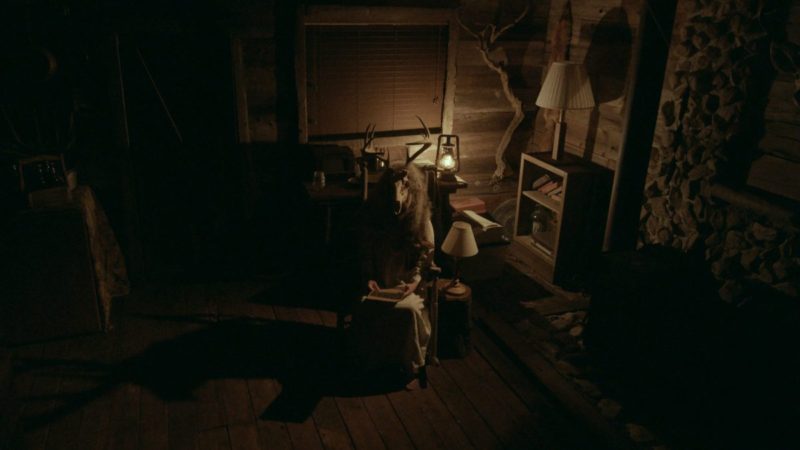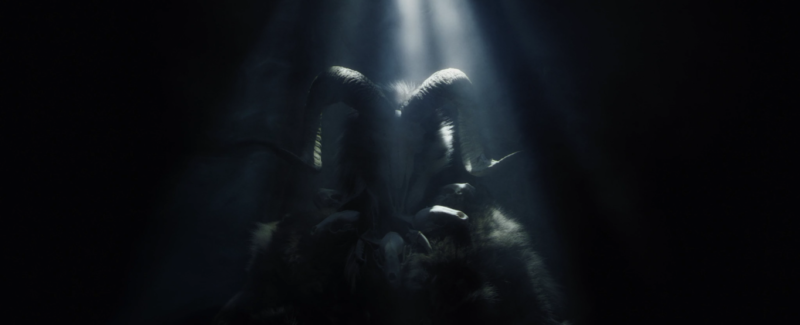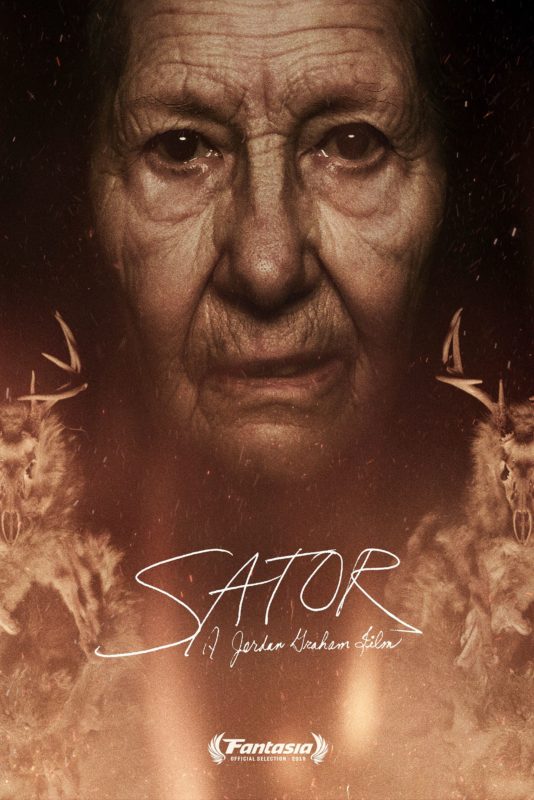Remember this name: Jordan Graham.
After premiering his new film, Sator, at Fantasia Film Festival this past weekend, writer/director Jordan Graham made quite the case for his name being added to the list of new rising indie horror directors. One of my most-anticipated movies coming out of Fantasia 2019, this gorgeous yet menacing vision of solitude and the very real threat of a family’s “skeletons in the closet” is not something to be missed.
Sator follows Adam (Gabe Nicholson), who, while living out in a cabin deep in the woods, spends most of his days with his dog out hunting and checking deer cams. Occasionally getting visits from his brother, Pete (Michael Daniel), the two find themselves heading down the road through the woods every so often to visit their widowed grandmother, “Nani”.
However, “Nani” is never quite alone.

For decades, “Nani” has claimed to have been visited by some kind of spectral presence that goes by the name, “Sator”. Sator, she says, “has been training me, teaching me to be a person.” But Adam soon finds Sator to be far more malevolent than any of them could have imagined. Evenly paced and skillfully crafted by one-man crew, Graham, Sator is a looming, quiet, indie horror tour de force with its dark and foreboding atmosphere and some of the most bone-chilling scenes I’ve watched in some time.
Part of what makes Sator so terrifying is punctuated right off that bat with a clip of Graham’s own grandmother. You see, Sator is somewhat biographical, with Graham basing much of the film on his family’s own experiences with his own grandmother’s connection to a spirit she identified as Sator. The film blends these personal experiences with a palpable terror that benefits from its minimalism as it weaves a tale of solitude and isolation with a threat of supernatural horror.

Early in the film, Adam and Pete establish Sator almost as an imaginary friend of “Nani”’s, but Graham makes Sator feel shockingly real. This supernatural specter goes from a perceived annoyance to actual threat with POV shots of Adam running through the woods and whisperings of Sator so distinct and shockingly close that you’ll find yourself looking over your shoulder. Graham crafts an antagonist that feels as real to us as it has to him for nearly his entire life.
One of my favorite things in Sator is how well Graham builds the film’s atmosphere. He knows the chilling nature of solitude and its impact on the human psyche, and he ramps up the fear imposed by that solitude with the happenings at Adam’s old and creaky cabin. In fashion previously seen in films like The Blair Witch Project and others, the threat of something walking around just past the wooden walls of the cabin, snapping twigs or thumping across the porch feels terrifying imminent. Adam, with a shotgun in hand, is constantly waiting for something to come bursting through the front door as it loudly creaks open night after night, and we wait with bated breath for the same thing.
Sator knows that it’s not always what you see that is the scariest thing, but the threat of what you don’t see.
It’s fun to watch a movie like Sator that feels fresh but also has some clear influences from great previous horror. Graham clearly has a love for one of the best horror films in recent years, The Witch, and effectively borrows imagery from that film that he reworks to effectively make it his own. There’s also elements of The Blair Witch Project, The Ritual, a hint of Hereditary, and even M. Night Shyamalan’s Signs. However, not once does the film feel derivative, it is entirely it’s own thing.

Sator implements some interesting camera choices, switching from widescreen color shots, to black and white scenes at Nani’s, to flashbacks presented in the form of rough VHS camcorder footage. Each of these camera styles is distinct and plays it’s part of the storytelling well, but never feels out of place while showing us that the threat of Sator on this family is nothing new, but rather a decades-long affair. The VHS footage feels particularly intimate and is some of the stuff that probably creeped me out the most.
Ultimately, Sator leaves a lot of questions open, which might leave some viewers scratching their heads about what they just watched. But that’s not necessarily a bad thing. Sator is a film with several layers that clearly benefits from multiple viewings. Part of the enjoyment of the film is watching what unfolds and realizing that hidden throughout the film’s many audio recordings of Sator’s true nature are the answers to the film’s many questions.
Find Sator. See Sator. It’s a methodical, slow-burn exercise in horror minimalism and one of the best movies that I’ve seen at Fantasia this year. Do not sleep on Sator, because Sator never sleeps.
RATING: B+





